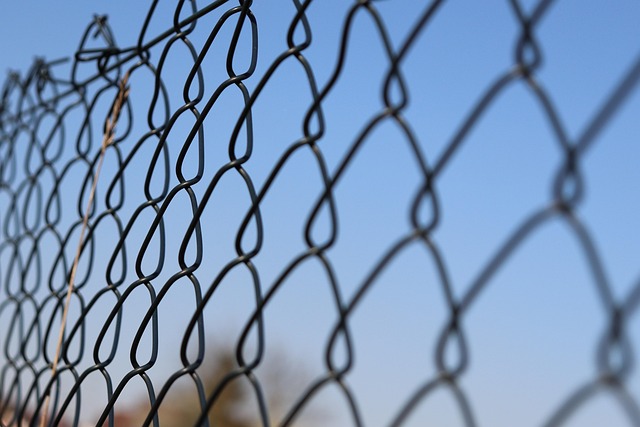Introduction:
Elevate your outdoor space with the timeless beauty of stained and sealed wooden fences. This comprehensive guide delves into the art of fence staining, offering insights on understanding its benefits, selecting the perfect stain, and mastering the application process. From choosing the right products to sealing techniques and maintenance tips, we equip you with all you need to transform your fence into a stunning focal point. Discover how proper care can ensure longevity, preserving the aesthetic appeal that defines your outdoor sanctuary.
- Understanding Fence Staining: Benefits and Types
- Choosing the Right Stain for Your Fence
- Step-by-Step Guide to Effective Fence Staining
- Sealing Techniques for Longevity and Protection
- Maintenance Tips for Stained and Sealed Fences
Understanding Fence Staining: Benefits and Types
Understanding Fence Staining: Benefits and Types
Fence staining is a popular way to enhance the appearance and durability of wooden fences. It involves applying a colored coating to the fence’s surface, which not only adds aesthetic appeal but also serves as a protective barrier against the elements. The primary benefits include improved visual appeal, increased longevity of the wood, and reduced need for frequent repairs. Different types of stains are available, each offering unique features like water-based options that are eco-friendly and easy to clean, or oil-based stains that provide deeper colors and greater protection against UV rays.
Additionally, sealing plays a crucial role in fence maintenance. After staining, applying a sealer helps lock in the color and protect the stain from fading or chipping due to sun exposure, rain, or harsh weather conditions. Regular sealing also prevents moisture from penetrating the wood, thereby reducing the risk of rot and other structural damages. With proper care, including regular cleaning and re-staining/sealing every few years, a wooden fence can retain its beauty and strength for many years.
Choosing the Right Stain for Your Fence
When considering fence staining and sealing, selecting the suitable stain is a critical first step. Different stains offer various levels of protection and aesthetic appeal. Water-based stains, for instance, are environmentally friendly and easy to apply but may not provide as deep of a color or protection against fading as oil-based options. Oil-based stains, while more durable, can be harder to clean up and may emit stronger odors.
The type of wood on your fence also plays a role in stain selection. Light-colored woods, like cedar, absorb less dye, so lighter stains might be more suitable. Dark woods, such as redwood, offer a better canvas for deeper, richer colors. Always test a small area with potential stains to ensure the desired outcome before applying them to your entire fence.
Step-by-Step Guide to Effective Fence Staining
To achieve a stunning, long-lasting finish for your wooden fence, follow this step-by-step guide. First, clean the fence thoroughly to remove any dirt, debris, or mildew using a pressure washer or a mild detergent solution. This ensures that the stain adheres properly. Next, sand the surface gently with fine-grit sandpaper to roughen it slightly, enhancing paint or stain penetration.
Rinse the fence again to eliminate any dust and allow it to dry completely. Select your desired fence stain, considering factors like color, finish (matte, semi-gloss, or gloss), and weather resistance. Apply the stain using a brush, roller, or sprayer, following the manufacturer’s instructions for coverage rates and drying times. Even coats are crucial for an even finish; be patient and allow each coat to dry thoroughly before applying another.
Sealing Techniques for Longevity and Protection
Sealing is an essential step in fence staining and maintenance, offering long-term protection against environmental elements. There are various sealing techniques available, each providing different levels of durability and aesthetics. Water-based sealers are popular choices due to their low odor and quick drying time. These sealers form a protective barrier by filling in the wood’s pores, preventing water absorption and minimizing fading caused by UV exposure. They offer a subtle finish that enhances the natural color of the wood.
On the other hand, oil-based sealers provide a richer, more distinctive look with a slight sheen. These sealers penetrate deeply into the wood, protecting against rot, mold, and insect damage. While they may take longer to dry, oil-based sealers offer superior durability and can last for several years, making them ideal for high-traffic areas or where harsh weather conditions are prevalent.
Maintenance Tips for Stained and Sealed Fences
Regular maintenance is key to keeping your stained and sealed fence looking its best. After initial staining and sealing, establish a routine that includes cleaning and re-applying sealer every one to two years, depending on exposure to elements like sun and rain. During each cleaning session, use a soft brush or sponge to remove any dirt or mildew buildup; this will prevent the sealer from chipping away prematurely. Always follow manufacturer instructions for both cleaning solutions and sealing products.
Additionally, be mindful of nearby plants that might transfer sap or other substances to your fence, as these can damage the finish. Consider planting at a safe distance or using protective barriers to shield the fence from direct contact with plant material. Lastly, keep an eye out for any signs of wear and tear, such as cracks in the stain or flaking sealant, which should be addressed promptly to maintain the overall aesthetic and longevity of your fence.
